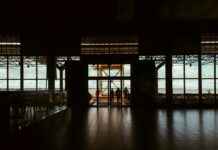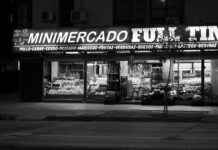In the Charmeuse district, the last swells destroyed the riprap erected by man to protect homes and delay the arrival of the sea as much as possible.
The natural phenomenon has accelerated: the sea level is rising by an average of 3.5 mm per year in Martinique, according to the latest figures from the IPCC (Intergovernmental Panel on Climate Change), against 2 .5 mm ten years ago.
«By 2090-2100, Martinique should lose 5% of its territory in relation to the single phenomenon of sea level rise, with the appearance also of storm surges which will exacerbate the force of penetration of the sea inland», underlines the geographer Yoann Pélis.
Jean-Guy Gabriel grew up in Le Prêcheur, which has 1,200 inhabitants. He knew a time when the communal festival took place in front of the Charmeuse beach. Today there is only the sea, which has eaten away more than 60 meters of beach between 1947 and 2010.
Aboard his skiff, the Agoulou, he bitterly contemplates the inevitable advance of the sea on his hometown. It runs along the coast, at full speed, where the red leaves of the flamboyant trees clash with the lush green of the tropical vegetation.
«Here, with the coconut tree, it’s my home,» he points out. His house with yellow walls, a shady corner facing the Caribbean Sea, is now at the water’s edge. «Here too, the sea has recovered the riprap. Two years ago, fishermen could still pass with their pickup.»
– «There were houses» –
The most visible setback is at Anse Belleville, where the coastline has receded by more than 130 meters in 60 years.
«There, in the 1950s, it was a fully developed village on the coastal fringe, up to about 100 meters out to sea», recalls the mayor of Le Prêcheur, Marcellin Nadeau, on the pier along the sea. «There were houses, shops, everything that makes up the life of a village». Fishermen’s cabins are now under water.
The sections of coastline that recede the most in Martinique are located in the northwest of the island, such as at Le Prêcheur.
Several factors explain the extent of the phenomenon: the friability of the volcanic rock in contact with water, but also the underwater areas where the swells rush in, which gain speed and promote coastal erosion.
«There is also the action of man, who for decades has taken sand from the coast. All the constructions have been made with sea sand», recalls Professor Pascal Saffache, from the University of the West Indies and Guyana.
The revegetation of the coast helps to fight against erosion.
Seaside grape trees, endemic shrubs that are extremely resistant to salt and spray, have been planted along the Charmeuse to fix the beach and slow down the retreat of the coastline.
Beyond the meteorological and climatic risks, there is the question of future regional planning: where will the Martinicans of the coast be relocated, while the habitable zones are less and less important?
– «In 10 years, it’s over» –
The town hall of Le Prêcheur plans in particular to install a school and new dwellings in the heights of the city, to accommodate between 60 and 100 families, i.e. nearly 300 people.
The smell of grilled fish emanates from Le Mélodie, on the road to Anse Belleville. Joseph Gustave, the manager, holds in his hand a photo of him dating from more than 40 years in front of a long stretch of white sand beach for tens of meters, today totally submerged.
«Previously, people could stay under the coconut trees or on the beach. Fishermen set up their nets on bamboo stakes. Now it’s over. There is a shortfall,» he laments.
The sea advances so much that it seeps under its terrace, which threatens to collapse. He financed the riprap of his restaurant out of his own pocket to the tune of 25,000 euros. «And despite that, the sea still passes. I prefer not to think about it, but in 10 years I know it’s over,» he insists, annoyed.













